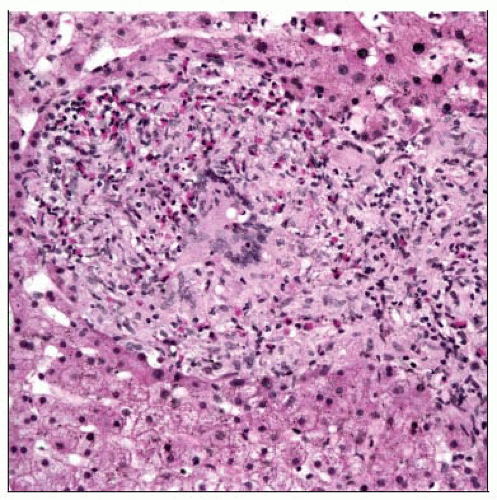Drug-related Granulomatous Hepatitis
Laura Webb Lamps, MD
Key Facts
Clinical Issues
Drug-induced hepatic injury can mimic any other form of liver disease
Microscopic Pathology
Noncaseating granulomas
Presence of granulomas, ± eosinophils, does not prove drug-related etiology
Combination of microgranulomas and hepatocyte injury is very suggestive of granulomatous drug reaction
Diagnostic Checklist
Drugs responsible for up to 30% of hepatic granulomas
Careful drug history and temporal correlation between drug administration and liver disease are useful
TERMINOLOGY
Definitions
Granulomatous inflammation caused by drug or toxin
Important mechanism of drug-related hepatotoxicity
Drugs reportedly responsible for up to 30% of hepatic granulomas
Many implicated drugs, including over-the-counter and herbal preparations
ETIOLOGY/PATHOGENESIS
Probable Hypersensitivity Reaction
Common offenders
Antimicrobials
Penicillins
Sulfa drugs
Cephalexin
Sulfadoxine (antimalarial)
Dapsone (antibacterial)
Anticonvulsants
Carbamazepine
Phenytoin (anticonvulsant)
Cardiac drugs
Diltiazem (calcium channel blocker)
Procainamide (antiarrhythmic)
Trichlormethiazide (diuretic)
Other
Allopurinol (antihyperuricemic)
Diazepam (benzodiazepine)
Stay updated, free articles. Join our Telegram channel

Full access? Get Clinical Tree




